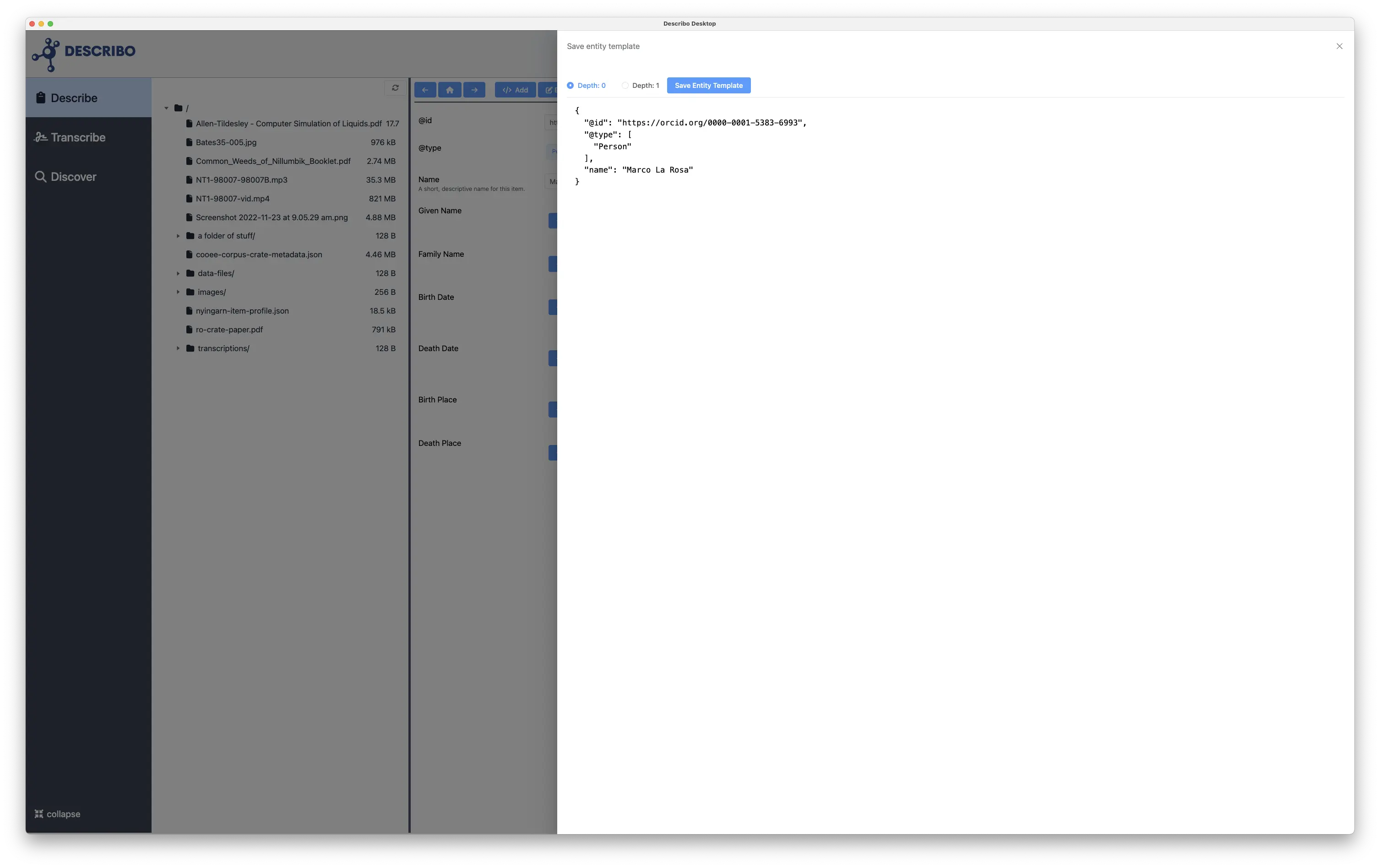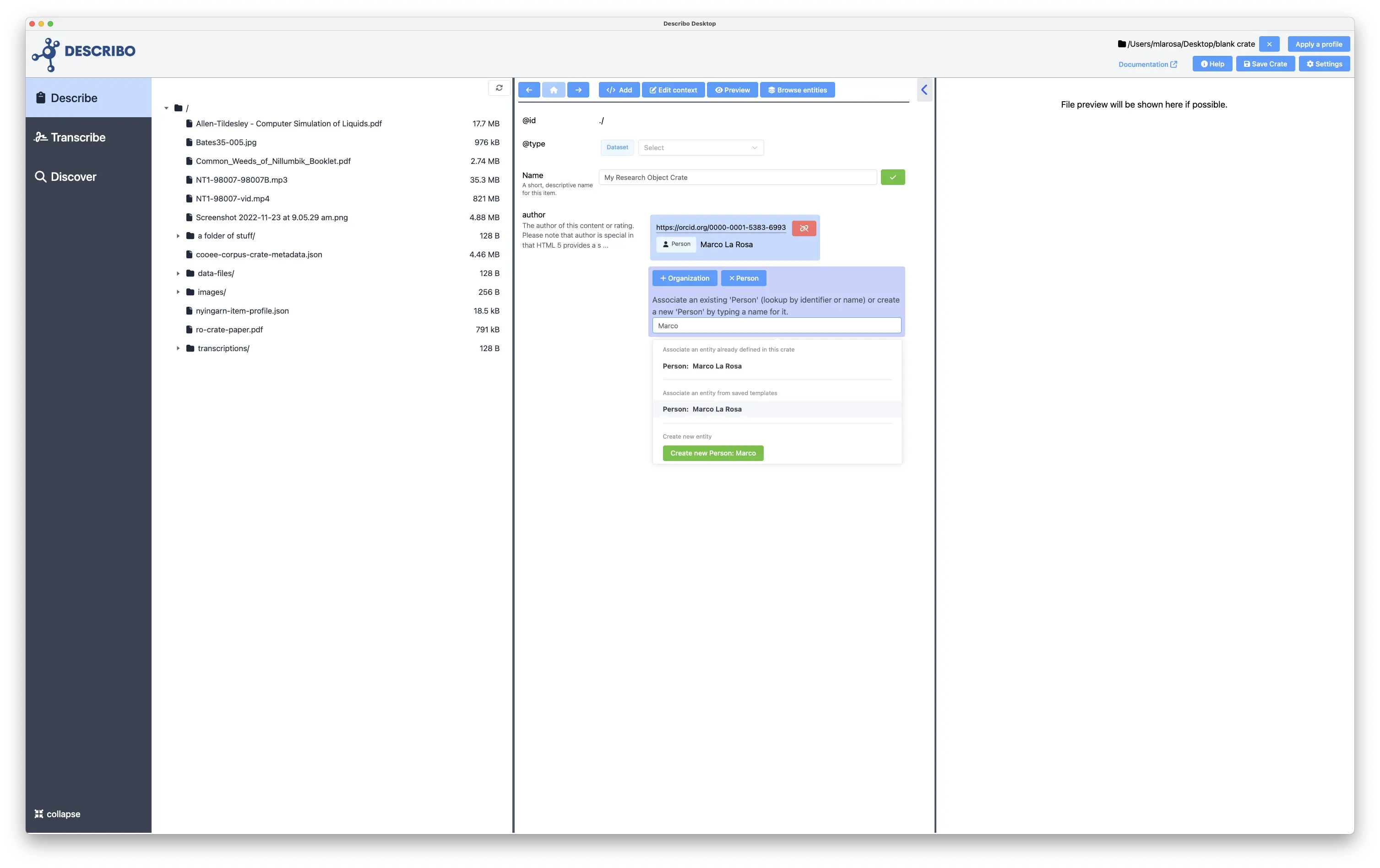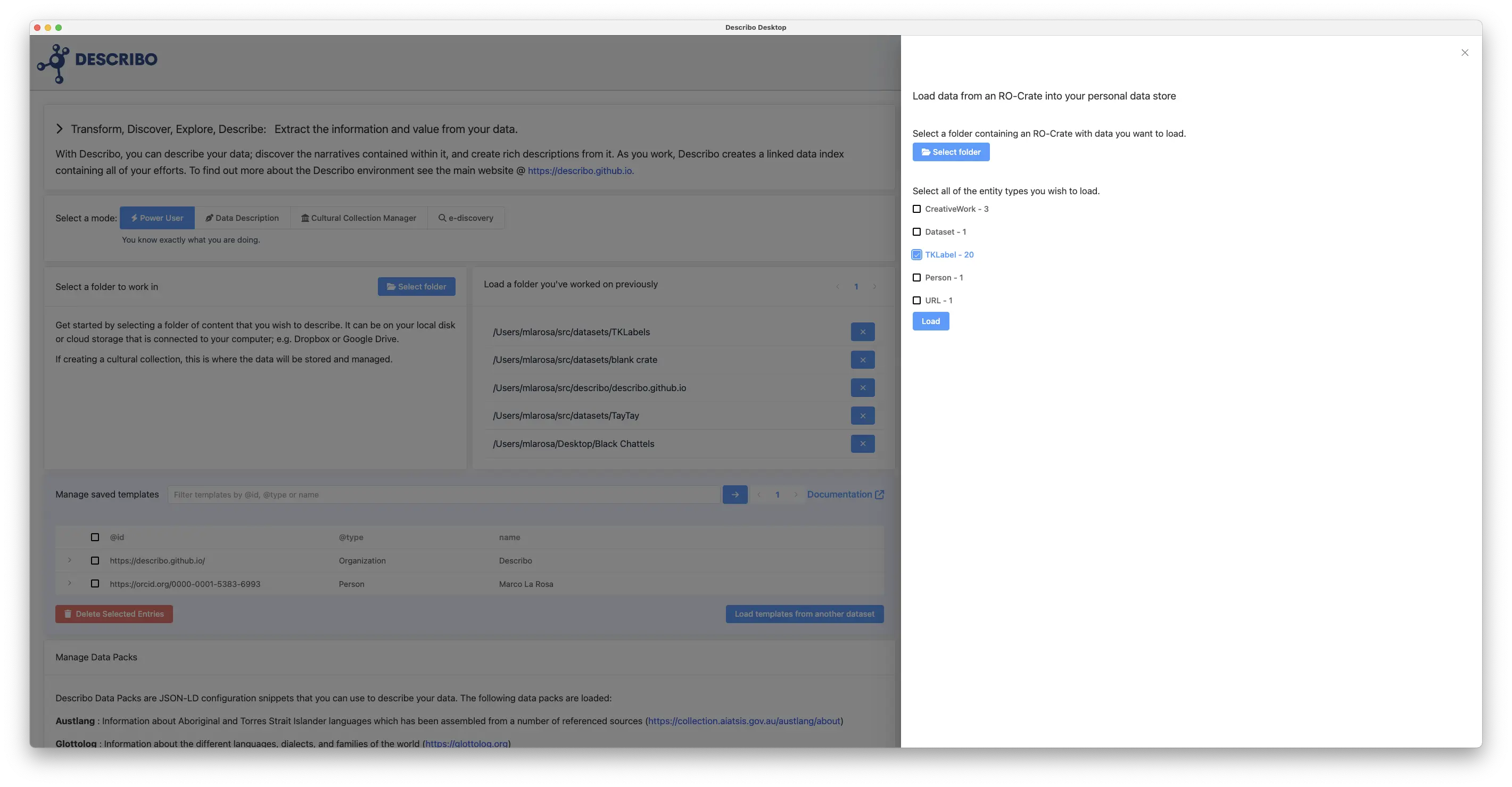Creating a knowledge base
Saving entities for re-use
Often times, you will carefully craft an entity definition that will be useful elsewhere. An obvious example is when you define yourself as an author. In that case, your entity definition will have your name and a URL as your unique identifier (e.g. an ORCID) and you can save that definition as a template for re-use in other work.
In the following image we can see what will be saved as a template. By setting depth to 1 linked entities will be resolved and included. Note that in both cases (depth 0 or 1) only properties will be included. Dangling references to other entities in this metadata will not be included.

Then, when describing content, you will be presented with matching templates. Note the middle entry under the section title "Associate an entity from saved templates".

Loading an RO-Crate
You can also load entities from an RO-Crate into your personal knowledge base. Perhaps you've created a dataset as described in the TKLabels article.
Notice the highlighted section in the following screenshot? That's where we manage our saved templates. In the screenshot you can see that there are two templates: one describing the Describo organisation and one describing me as a Person.


When it's done, those entities will now be loaded into your personal datastore. In the following screenshot we can see the TKlabel entities are now also available.

When you create a Vocabulary that specifies that a property with a TKLabel entity as its value, Describo will offer you these entities as selections to choose from.

